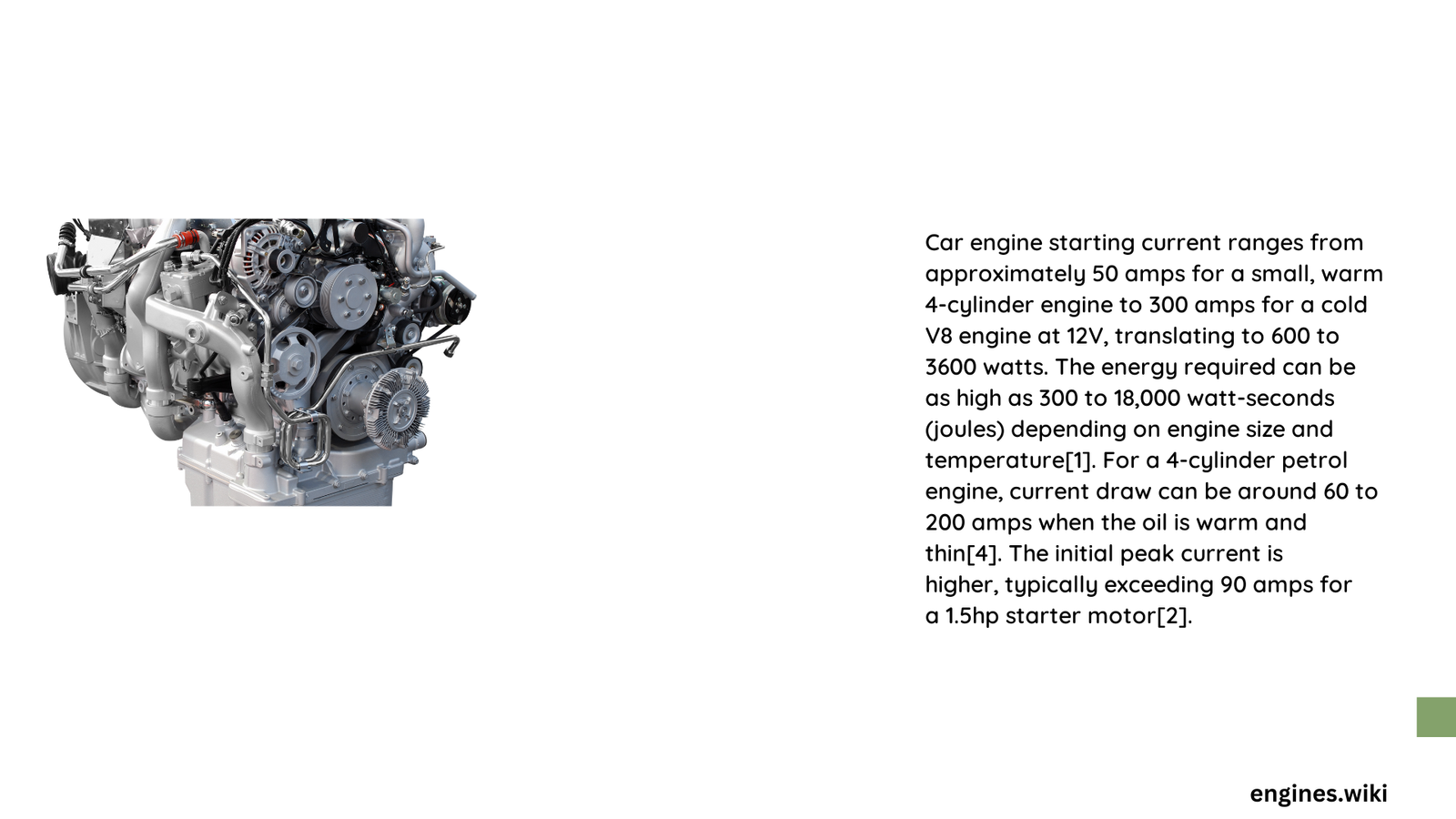Car Engine Starting Current: A Comprehensive Technical Overview
When a vehicle’s engine cranks, the electrical system demands a precise and substantial current to initiate the motor’s rotation. Car engine starting current varies dramatically based on vehicle size, engine configuration, and environmental conditions, typically ranging from 250 to 1000 amperes. Understanding these electrical dynamics is crucial for maintaining reliable vehicle performance and preventing unexpected starting failures.
What Determines Car Engine Starting Current?
Car engine starting current depends on multiple interconnected factors:
- Vehicle Type Influence
- Compact Cars: 250-400 amps
- Sedans: 400-600 amps
-
SUVs/Trucks: 600-1000 amps
-
Temperature Impact
| Temperature Range | Current Requirement | Performance Effect |
|——————|———————|——————-|
| Below 0°F | Highest Amperage | Maximum Resistance |
| 32°F-70°F | Moderate Amperage | Optimal Performance |
| Above 70°F | Lowest Amperage | Easiest Cranking |
How Do Starter Motors Draw Current?
Starter motors represent the primary current consumers during engine initialization. Their current draw follows a predictable pattern:
- Initial Crank: Highest current draw (500-1200 amps)
- Engine Turnover: Decreasing current requirement
- Full Rotation: Stabilized current consumption
Diagnostic Techniques for Starting Current
Professionals utilize specific methods to assess starting current:
- Multimeter Voltage Check
- Fully charged battery: 12.6 volts
- Partially discharged: Below 12.4 volts
-
Critically low: Under 12 volts
-
Current Draw Measurement
- Use specialized automotive multimeter
- Measure DC current during cranking
- Compare against manufacturer specifications
What Factors Affect Starting Current Performance?
Critical elements influencing starting current include:
- Battery Age
- Ambient Temperature
- Engine Oil Viscosity
- Battery Condition
- Starter Motor Health
Recommended Maintenance Strategies
To ensure optimal starting current performance:
- Regular Battery Testing
- Clean Battery Terminals
- Check Charging System
- Replace Battery Every 3-5 Years
- Use Appropriate Cold Cranking Amp (CCA) Rating
Technical Specifications Breakdown
Battery Capacity Requirements:
– Small Vehicles: 250-400 CCA
– Medium Vehicles: 400-600 CCA
– Large Vehicles: 600-1000 CCA
Potential Starting Current Problems
Warning signs of potential starting current issues:
– Slow engine cranking
– Clicking sounds during start attempt
– Intermittent starting
– Rapid battery drain
Conclusion

Understanding car engine starting current requires comprehensive knowledge of electrical systems, vehicle specifications, and diagnostic techniques. Regular maintenance and awareness of your vehicle’s specific requirements can prevent unexpected starting failures.
